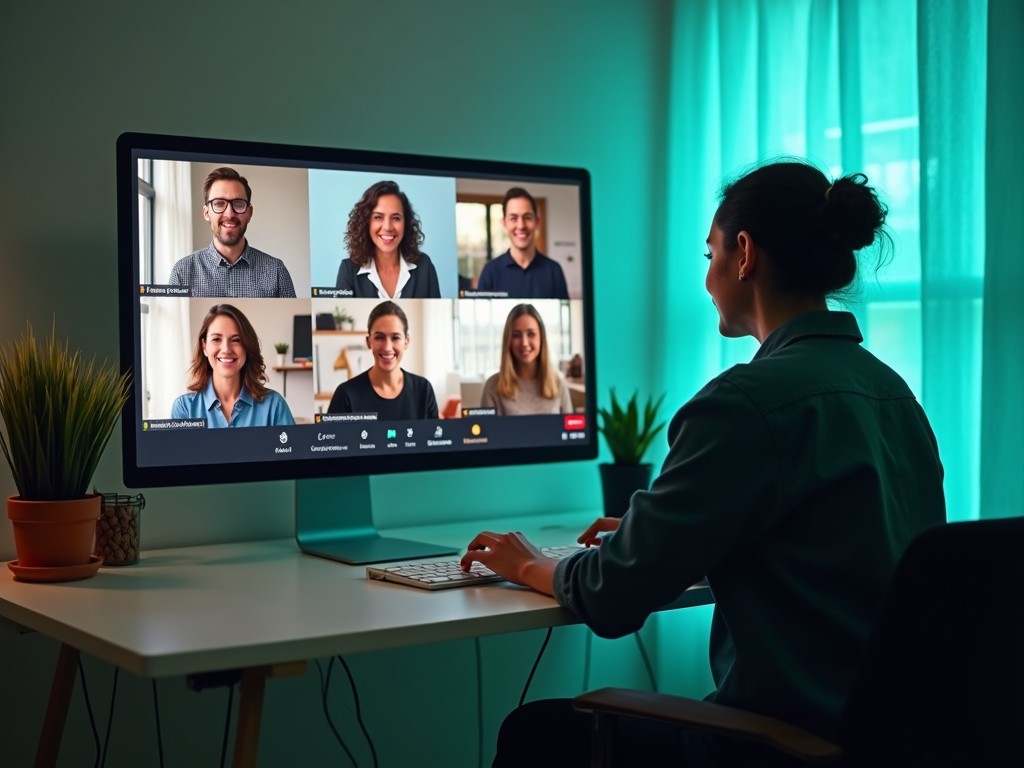
Best Practices for Promoting Inclusivity in Remote Workplaces for Deaf Employees
- Posted by Cicada Sign
- Categories Blog
- Date October 26, 2024
- Comments 0 comment
In the current remote and hybrid work era, inclusivity in the workplace has become more essential than ever. Ensuring that Deaf and hard-of-hearing (HoH) employees can thrive in remote environments is not just a courtesy—it’s a necessity for true workplace equality. With more companies embracing digital workflows and remote collaboration tools, it’s vital to implement best practices that promote inclusivity and accessibility for everyone.
1. Invest in Accessible Technology
One of the most critical elements of inclusivity in remote work is providing employees with accessible communication tools. Platforms such as Zoom and Microsoft Teams offer closed captioning features, but ensuring their functionality is enabled and optimized for your team is crucial. Additionally, offering American Sign Language (ASL) interpretation for video meetings and using real-time transcription services like Otter.ai helps bridge communication gaps.
2. Encourage Clear Communication and Patience
It’s important to set a precedent for transparent and accessible communication among the team. Employees should be encouraged to speak clearly, pace their speech during meetings, and provide visual aids, such as presentations and written summaries, to support verbal communication. Make it a company policy to ensure that every voice is heard and understood.
3. Visual and Non-verbal Communication Strategies
Non-verbal communication plays a significant role for Deaf employees in remote settings. Utilize tools like Slack or Microsoft Teams chat during meetings to share key points and comments in writing. These tools can support your team’s workflows, enabling smooth communication for Deaf and hearing colleagues alike. Additionally, employers should encourage the use of visual cues such as hand signals or emoticons to convey specific messages during meetings.
4. Ensure Closed Captioning and Transcription Services for All Meetings
For remote workers who rely on reading, always provide live captions or post-meeting transcripts for recorded meetings. Software like Google Meet and Zoom offer automatic captions. For a more professional approach, hire real-time transcribers or implement AI-powered transcription tools like Rev.com or Verbit.ai.
5. Offer Flexible Work Environments
Being inclusive isn’t just about adding technology; it’s also about flexibility. Some Deaf employees might require extra time to review materials before or after meetings, while others might prefer to communicate over email or chat rather than video calls. Offering flexible work options empowers employees to communicate in ways that suit them best.
6. Train Team Members on Deaf Awareness and Inclusivity
Inclusion starts with awareness. Ensure that your entire team understands the needs of Deaf colleagues by offering Deaf awareness training. This training can help hearing colleagues better understand Deaf culture, the use of sign language, and best practices for interacting with Deaf coworkers.
7. Regularly Check In and Offer Support
It’s essential to regularly check in with Deaf employees and offer them the support they need. Accessibility shouldn’t be a one-time consideration. Make it a part of your ongoing work culture by inviting feedback, providing support, and actively addressing any issues or concerns related to inclusivity.
Resources to Promote Inclusivity in Remote Workplaces:
- Otter.ai – Real-Time Transcription
- Rev.com – Human Transcription Services
- Gallaudet University – Deaf Awareness Resources
Building a Deaf-Friendly Remote Workspace
Implementing these best practices can significantly improve the remote work experience for Deaf and hard-of-hearing employees. From accessible technology to a supportive work culture, ensuring inclusivity requires dedication and attention. Creating a workspace that meets the needs of all employees is essential for their success and well-being.
At Cicada Sign, our mission is to empower Deaf individuals in the workforce, and we believe that inclusivity in remote work environments is key to making that mission a reality. Together, we can create an accessible digital world for all.





